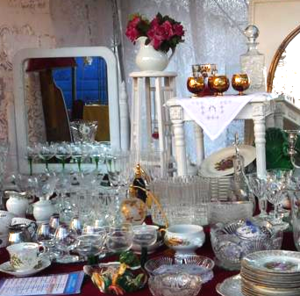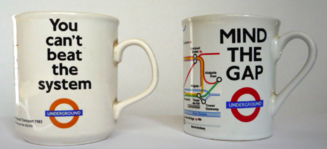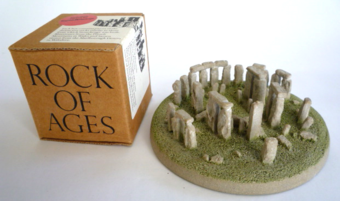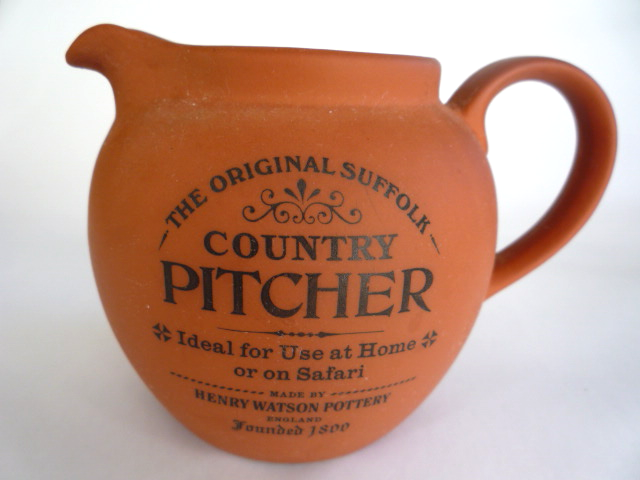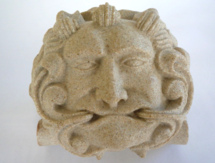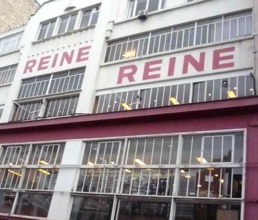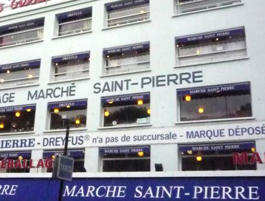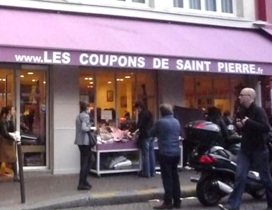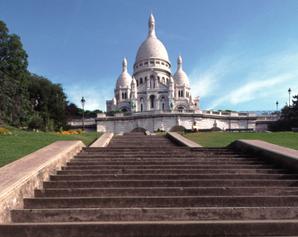Fashion is on show all over Paris. You will find it in department stores, boutiques, and markets. I have two favorite fashion stores in Paris. One is the Swarovski store across the street from the Saint Germain des Pres metro stop. It displays their latest crystal fashion jewelry in little windows that look like those of the famous Tiffany's diamond store.
The other store I like is the Fragonard perfume shop at the bottom of the Montmartre funicular. I always stop here to pick up affordable sachets, not available at the main store, as gifts for family and friends. Fragonard has a free museum you can tour at the main store near the Opera metro stop. Information about it is under Paris Scribe Museum and Shops at the fragonard.com website. CAUTION: you may want to avoid this tour if you have allergies or asthma.
I suspect you will find many of your own favorite fashion shops in Paris. Wandering around the city and searching for them is definitely one of the most delightful things to do in Paris.
When I went abroad the first time I was a student hosteling around Europe. My backpack was full and my pockets were empty. So, of course, anything I brought home had to be small, inexpensive, and gifts for my family and best of friends. So I bought ceramic Delft Dutch shoes and an endearing little calf as gifts for my grandmother and mom in Amsterdam but they now belong to me.
Many years later I traveled to London with a group of women friends. I had acquired a set of Blue Willow china and needed a teapot to match. Going from shop to shop I finally spotted one, in the basement sale room of a ceramic shop. Within a year I returned to London with my husband and children. During a shopping foray into a crowded Herrod's I found a smashing tea cozy to go with the teapot.
At St. Martin's in the Field Church in London my family created our own souvenirs. After a delicious lunch in the crypt restaurant we spent the rest of the afternoon making brass rubbings. Upon returning home I had them framed and hung them up. Every time I see them I remember the wonderful time we had together doing these art pieces.
On that same trip we attended a science fair at the Natural History Museum. Scientists from all over Great Britain were there giving presentations about their research. Coincidentally, our children had just participated in their school science fair. The museum had also planned special events for children. Guides were dressed as famous scientists of the past. To my daughter's delight her favorite scientist, Mary Anning, was represented. She carried a basket full of fossilized sea shells. Each child was allowed to have one. She still has that shell in her memory box.
On our second trip to Great Britain we spent a lot of time in the English countryside. I tried to bring back souvenirs that spoke to me. I wanted them to evoke memories of an experience I had or site I visited. I also like my souvenirs, if possible to appeal to my special interests or to be functional. I have used the Green Man as a paper weight. We use the pitcher, of course, at home when we give a tea party. The miniature Stonehenge is purely decorative as is the rock. I collect rocks and this one is the same kind used to build Stonehenge
On a recent trip to London I replaced my Underground cup. My first one cracked so I had to glue it back together. I use the repaired cup on my office desk as a catch-all and drink my morning coffee out of the new one.
A few years ago an English friend a gave me a new cup to replace my first one. Now that cup is also too chipped up to use. The new one will be my third cup. Do you suppose the new cup will have a different saying?
My favorite place to buy souvenirs is in museum shops. I like to purchase items that have aesthetic appeal, remind me of a particular place I visited, or are functional. There are several rules I use to determine if something is worth buying. The first one is if I can purchase the same exact thing at home for relatively the same amount of money I will not buy.
In a trip to London, with some women friends, they bought dishes for their china sets that cost almost the same amount as those for sale in the states. The second rule is I always ask myself will it fit in both my suitcase and budget. It is so easy to overspend while traveling that I actually set aside space in my suitcase and a certain amount of money I can spend on souvenirs before I leave home.
Many overseas merchants offer a shipping service, for small and large purchases, which can be very helpful. They professionally pack the product and send it to a specific destination. Although there is often a fee for the service it usually comes with a money-back or replacement insurance policy if the item is damaged or lost during shipping.
I also shop, at home and abroad, with a list. For example, I like to buy books when I travel. This year I am purchasing quite a few books published by the Museum of London. I know exactly the ones I want. I checked out the museum's online store to make my list. Of course, I will visit the museum shop and probably buy some small item. Unfortunately, it is those small, unexpected purchases that can seem to add up surprisingly fast to a lot of money. I do budget in 'mad' money too.
There are many other places to purchase souvenirs. Most foreign countries make a considerable amount of their yearly revenue from taxes on purchases made by tourists. Many cities have department stores that offer a huge variety of tourist products for sale. In Winnipeg, Canada, Hudson Bay Trading Company is famous for it's multicolored wool blankets.
In Great Britain the city of London has several well known stores that sell tourist souvenirs. Among the most famous department store is Harrod's well known for it's large selection of goods, trendy packaging, and enormous crowds of shoppers.
When I was shopping at Harrod's in London with my young daughter she needed to use the restroom. We proceeded to the toilets only to find it cost a pound-and-a half for each of us to use the facilities. Unfortunately, I did not have three pounds in coins so the matron refused to allow us to enter together nor would she let my daughter enter without me. In desperation, I finally gave her a five pound note and she let us in. It was that or a puddle on the store floor.
I grant you the restroom was elegant. The stalls were private, although my daughter and I shared one, the towels were plush terry and the soap a lovely French lavender but I did not bother to leave a tip. That trip to the bathroom cost me seven American dollars. As a matter of fact, I found that very few foreign department stores, high-end or low-end, have free restrooms.
It surprised me to learn that some of these stores have a dress code. As a general rule of thumb avoid exposing too much flesh while shopping. Oddly enough the same rule applies to too much clothing. Women wearing head coverings or birkas have been denied access to stores, especially those in Paris.
In Paris the fabulous Art Deco Samaritaine and Liberty store, famous for high quality cotton fabric, are no longer open for business. However, Printemps and Galleries Lafayette have replaced these stores as shopping destinations where you may purchase almost anything you need or want. You can even buy the use of a restroom.
While the restrooms at the Galleries Lafayette are not free the spectacular views are. The Art Nouveau interior design of the first two floors is both elegant and graceful. Overhead is a gorgeous glass cupola.
The store is beautifully decorated with brass and marble. From the ground floor to mezzanine is a grand circular staircase or glass enclosed elevator both embellished with metalwork.
Surprisingly the floors above the second are more like Target. Every floor after the first two, including the basement, become more and more austere and minimalist. Ceiling heights drop and overhead pipes are exposed. The good news is prices also begin to fall but so does the quality of the merchandise.
On the seventh floor an escalator takes you to an outdoor balcony where, for free, you can see the rooftops and sights of Paris. This is where you will also find less inexpensive dining at the fast-food McDonald's or in a self-serve cafeteria. The cafeteria has inside and outside dining with a view of the city. McDonald's does not have a view of the city but it is right next to a wonderful child-friendly toy shop.
Large foreign cities generally provide tourists with many shopping options. However, some stores in Great Britain and Europe may only be allowed to have reduced prices sales at certain times of the year. If you are looking for less expensive products the outdoor markets may interest you. They have a special charm and offer unexpected finds at reasonable prices.
I say reasonable because the merchandisers who sell at these markets are very informed about the value of their goods. Many now post a price and refuse to dicker over prices. I have not had much luck getting prices down when I haggle. More than likely that is because my French is poor and the sellers are entirely aware that I am an America supposedly with lots of money to spend.
At Les Puces market, in French it means the flea which I suspect this market had plenty of in the old days, vendors sell their wares on tables, in stalls, and shops. Most accept cash and credit cards. The oldest part is located at the very end of the market under the metro bridge. Here you can find anything from books and knick knacks to bird cages and hospital bed frames. In the center are the stalls where vendors sell jewelry, clothes, and shoes. The outer streets house the more expensive designer shops. Food, all kinds and prices, are available at the market.
Markets, large and small, exist in most foreign cities. They are the places where the residents buy everything from food to household goods to furniture to clothing to accessories to grooming articles. In Paris you can find them in and under the metro, on public boulevards, and neighborhood parks any and all days of the week, all year long, rain or shine.
In the neighborhood where I stay there is a small market every Wednesday and Sunday from early morning to later in the afternoon. It stretches almost four blocks under the metro from the Duplex to LaMotte Picquet - Grenelle stops. During the third weekend in October there is a large antique sale in the same location.
Street savvy sales people set up lovely displays of antique jewelry, linens, books, music scores, post cards, glass, china, and furniture. The motto is if you want something vintage or antique it can usually be found for a good price at a brocante sale. If you cannot find an antique market during the time you visit Paris The Best Vintage, Antique and Collectible Shops in Paris by Edith Pauly might help find you one in the city.
This is where I buy my favorite out-of-date perfume. Oddly these markets are formal affairs. Customers are not allowed to touch the merchandise. If you forget, like I often do, a reprimand will go from a tut tut to a scolding to a reaming out very quickly.
So every time I want to smell a perfume I have to ask the sales person to get out the bottle, open the top, put it under my nose for sniffing, and put it back if I choose not to buy. With limited French speaking skills the experience can easily become an embarrassing ordeal for me. However, most markets are a free look at local culture and I willingly attend them for that very reason.
Paris is known as the city of fashion. Four times a year (spring - summer- fall and winter) designers create clothes and runway shows to promote their latest designs. The fabric and notions shops they buy supplies for their designs are located at the base of the Sacre Coeur Basilaca on Place Saint Pierre and Rue D'Orsel. Smaller shops are scattered throughout the entire city.
These are the fabric stores I also like to shop when I am in Paris. To get there I take the metro to the Anvers stop and walk up the tourist crowded Rue Turgo to the basilica. At the bottom of the steps up to Sacre Coeur I turn right and walk two blocks. Here I find Reine on the right side of the street and Les Coupons de Saint Pierre and Marche Saint- Pierre on the left.
During the rest of the year this same location has a neighborhood market where I shop for fresh food. Vendors sell fresh, seasonal vegetables and fruit gathered from all over France. Stalls display fish trucked in from the seaside and poultry raised on organic farms. The smell of crusty French bread and flakey apple tarts tempt me to over indulge.
To my delight I can buy gourmet cheese, mushrooms, jams, honey, and wine from local producers. I always buy flowers here to make my studio apartment more homey. Of course, no Parisian market would be complete unless it offered a selection of clothing and household goods. However, it annoys me that no matter how many times I have shopped here no one sold wine glasses. Maybe sometime when I visit someone will finally decide to sell them.
The Reine is one of the premier fabric stores of Paris. This is the store where professional designers shop. The selection is huge and prices are high. Touching the textiles is discouraged which makes me crazy. However, considering the number of people in this store, I can understand their concern about fabric getting soiled so I comply. Across the street at Les Coupons de Saint Pierre shoppers are handling pieces of fabric with abandon but the textiles appear to be third-rate scraps.
Marche Saint-Pierre, on the other hand, seems to be a compromise between the Reine and Les Coupons. There are fabrics printed with Parisian scenes on the first floor mixed among printed cottons, woven linen, lovely silks, and textured wools. Out of habit I do not touch these textiles either but the overall environment of the store is more welcoming. On the second floor I grab a little metal basket and wander around looking at all the sewing supplies. I find unique metal fasteners, reproductions of vintage buttons, and beautiful woven braid. Plunk! Into my basket they go. Then I wait and wait and wait in line to pay for all my goodies.
Out and about in the city I find an inexpensive lace and bead shop at the Les Puces market. On the Avenue Saint Denis, near the arch, I come upon a fully stocked notion store. Across from the Carnavalet Museum is my favorite button and ribbon store.
Copyright 2017 Creative Travel Publications, LLC
Women's Travel Abroad
For Women About Women By Women
Savvy Souvenir Shopping
You Are Welcome to Contact Me Personally With Comments or Questions
Trip Tips
